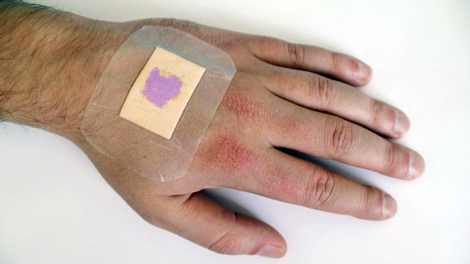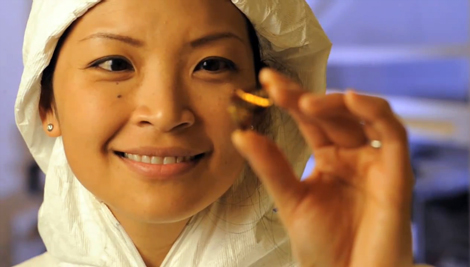Posted on December 2nd, 2010 by jxh

In the future, you might be able to skip untangling those holiday lights
It might sound like something from the movie Avatar, but what if trees lit up at night, replacing the need for street lights?
This fantastical vision may become a reality thanks to the discovery that placing gold nanoparticles within the leaves of trees causes them to give off a luminous reddish glow.
Read More
Filed under: Chemical, Civil, e-News, Environmental | 13 Comments »
Tags: Chemical, Civil, Environmental
Posted on November 17th, 2010 by jxh

Isn’t it time that band-aids, which have changed little since their invention in 1920, got a high-tech update? German engineers certainly think so, and that’s why they have created “smart” bandages that turn purple at the first sign of infection.
The new bandage insulates injuries just like any other bandage, but the dressing also contains a special dye that reacts to different pH values.
Read More
Filed under: Biomedical, Chemical, e-News | 1 Comment »
Tags: Biomedical, Chemical
Posted on November 9th, 2010 by axb

Yueh-Lin (Lynn) Loo, an associate professor of Chemical and Biological Engineering at Princeton University, is changing the future of electronics. The key? One word: plastics.
Loo’s research examines how electrically-active materials can be processed to make cheap, efficient, thin film devices (such as solar cells). Her manipulation of plastics could ultimately lead to technologies like tinted solar windows, color-changing sensors to detect water contamination, and smart plastic patches to monitor health.
Read More
Filed under: Chemical, e-News, Materials | 2 Comments »
Posted on September 22nd, 2010 by axb

Human skin is extraordinarily sensitive – our fingertips can perceive extremely small differences in pressure, texture, and temperature. Mimicking this ability artificially is a real technological challenge, but fortunately electrical engineers at Stanford and UC Berkeley seem to be up to the task.
At Stanford, a team led by chemical engineering professor Zhenan Bao has developed an artificial skin that is reportedly over 1,000 times more sensitive than its human counterpart. It consists of a thin rubber material placed between two parallel electrodes. When an object touches the skin and compresses the rubber, the surrounding electrodes register this pressure and convert it to electrical signals.
Read More
Filed under: Biomedical, Chemical, e-News, Electrical, Materials | Comments Off on Engineering Artificial Skin
Tags: Biomedical, Chemical, Electrical, Materials, Nanotechnology, Robotics
Posted on September 20th, 2010 by axb

Installing solar panels on the roof of buildings has become very en vogue recently. But in a few years charging up your home might be cheaper and easier than ever.
The Norwegian company EnSol AS has developed a thin, transparent solar film that can be sprayed onto windows and other surfaces, rendering them able to absorb the sun’s energy just as efficiently as solar panels.
Read More
Filed under: Chemical, e-News, Environmental | 2 Comments »
Tags: Chemical, Energy, Environmental, Nanotechnology, Solar













